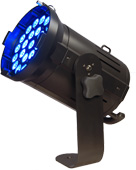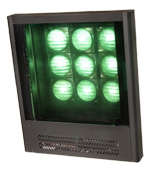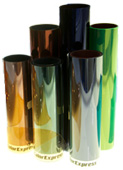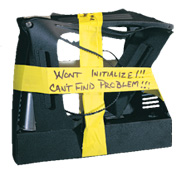How Scrolling Color Changers Work
Plastic colored filters, still called gel, are the most common way to add color to light beams used in theatre. Follow spot lights have used a "boomerang" type mechanism for decades to give multiple colors to one light. If we wanted color on smaller, stage light fixtures, how could that be done? Maybe it would be possible to motorize a boomerang to make a gel changer? The downfall of that idea was the mass involved in the gel frames. Moving the frames quickly meant that the frame had to be sturdier which made it heavier. Then the motor and mechanism had to be heavier. And around and around.
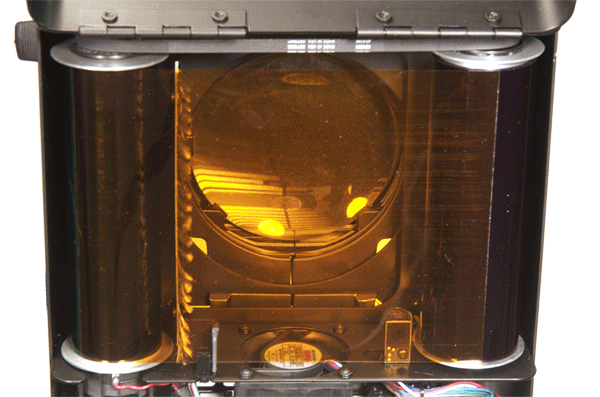
Wybron Invented the Scroller
The scroller idea, invented by Wybron in 1980, came from the concept that moving the mass of a gel frame took too much energy and machinery. By eliminating the gel frame, the absolute minimum mass would need to be moved. Taping the gels together with scotch tape seemed like the easy way to try this and the 2 rollers became the smallest way to embody the mechanism. Simple, huh? Just look at the picture above.
Like most simple ideas, the actual implementation turns out not to be so simple. It turns out that the gel needs to be taut between the rollers and because of the geometry of the rollers changing with fullness, that's not simple. Also the motor needs power and if that power could be combined with a control signal, then that would be better for the users. It also turns out that a scrolling gel changer is a combination of a device called a Wimshurst machine, and a Van de Graff generator, both static electricity generators. Static electricity is not so good for electronics. That is not so simple either.
So, we come to the end of this small history/primer. You now know that a scrolling color changer is a simple idea, which is not so simple to do. So if it is not simple how does it work so well? Here is the next chapter.

